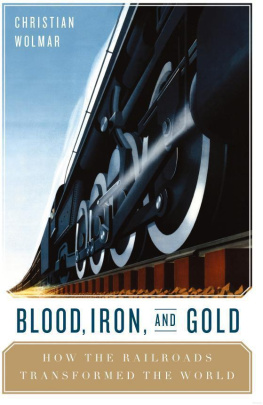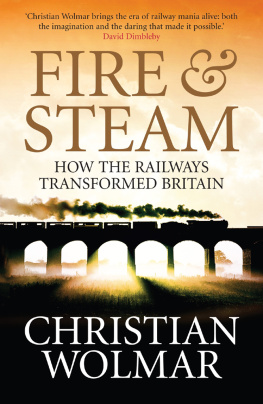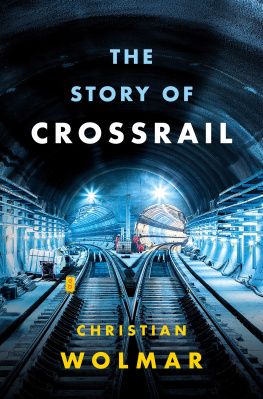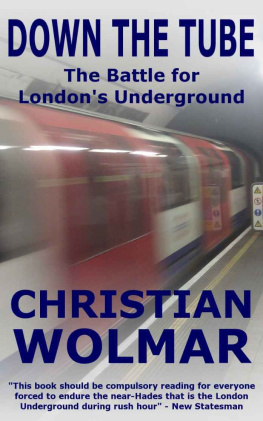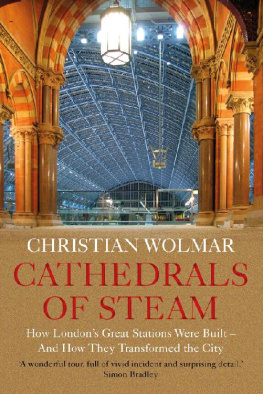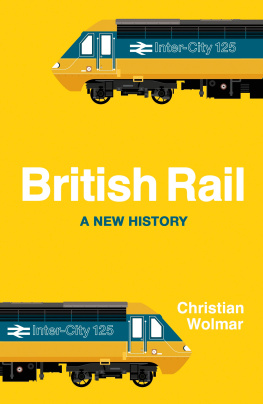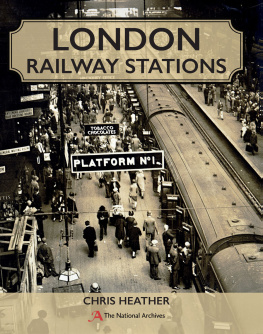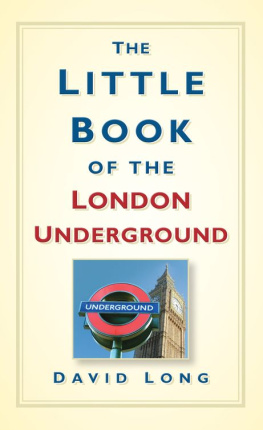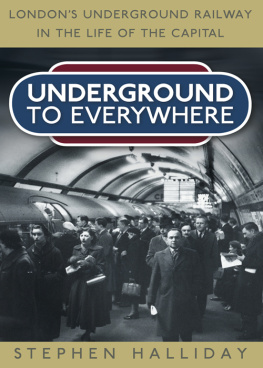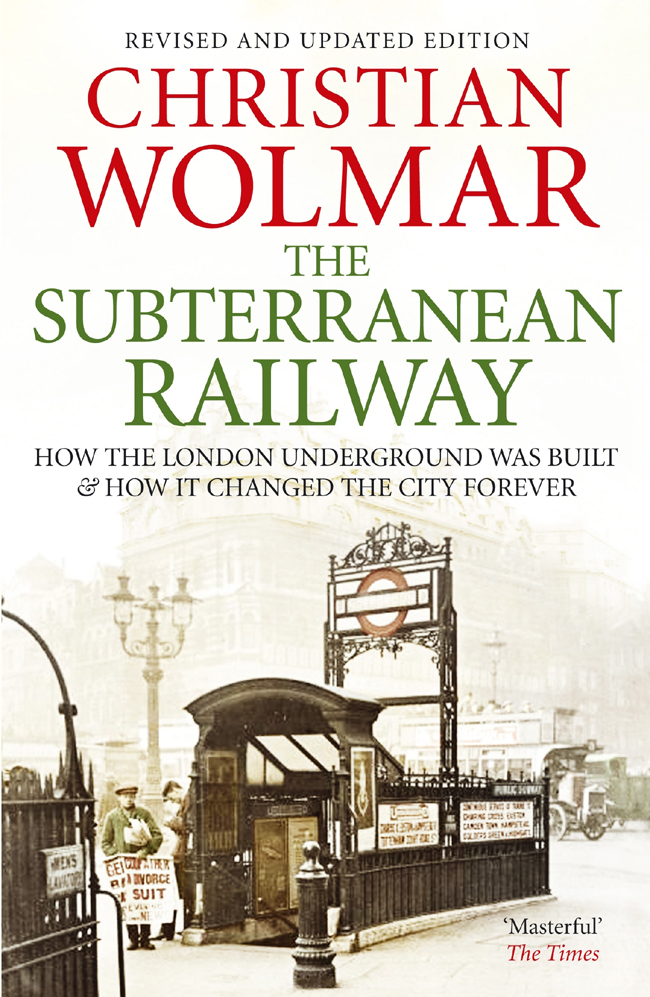THE SUBTERRANEAN RAILWAY
Christian Wolmar is a writer and broadcaster. His previous books include Broken Rails: How Privatisation Wrecked Britains Railways and Down the Tube: The Battle For Londons Underground. He writes regularly for the Independent and the Evening Standard, and frequently appears on TV and radio on current affairs and news programmes. He is currently working on a new history of the railways in Britain.
An absorbing history of the Tube... Christian Wolmar is best known as an indefatigable journalist
Michael Leapman, Independent
Moaning about the Tube has been one of Londoners favourite pastimes for more than 100 years. Few acknowledge the fantastic achievements of the pioneers who created the subterranean network, or think about the many ways in which it has transformed London... Wolmars book demonstrates that the Underground is cause for celebration, not complaint
Nick Rennison, Sunday Times
We mostly view the engineering miracle beneath our city streets with indifference or irritation. All we want to know is: does it work well or not? Christian Wolmar would like us to learn to love it. He is an unashamed Underground buff... Now he shares his fascination, in an entertaining and informative history
Paul Barker, Evening Standard
Next time you find yourself on a crowded tube platform, cursing the Northern Line for its dirtiness and unreliability, remember this: youre making Christian Wolmar very angry... The Subterranean Railway is both a history and a defence of the tube, impelled by frustration with how little respect Londoners accord one of the worlds greatest engineering feats... The Subterranean Railway captures the enthusiasm and excitement of the early years... using a deft selection of facts and anecdotes
John OConnell, Time Out
An epic tale featuring business rivalries, technical troubles, audacious gambles, rows, risks, and triumphs. The Subterranean Railway... is a timely reminder of how important it is that such an achievement is not left to suffer a legacy of sad decline
Editors Choice, The Good Book Guide
A book full of astute judgements, which deserves, and will repay, public attention
Colin Ward, The Architects Journal
Entertaining and accessible... Highly recommended
Oliver Green, The Victorian
An excellent overview of what is an extraordinary feat of engineering
Christopher Sell, The Engineer

First published in Great Britain in hardback in 2004 by Atlantic Books, an imprint of Grove Atlantic Ltd.
This revised and updated paperback edition published by Atlantic Books in 2005.
Copyright Christian Wolmar 2004
The moral right of Christian Wolmar to be identified as the author of this work has been asserted in accordance with the Copyright, Designs and Patents Act of 1988.
All rights reserved. No part of this publication may be reproduced, stored in a retrieval system or transmitted in any form or by any means, electronic, mechanical, photocopying, recording or otherwise, without the prior permission of both the copyright owner and the above publisher of this book.
Every effort has been made to trace or contact all copyright-holders. The publishers will be pleased to make good any omissions or rectify any mistakes brought to their attention at the earliest opportunity.
9 8 7
A CIP catalogue record for this book is available from the British Library.
ISBN 978 1 4354 023 6
ePub ISBN 978 1 8488 7253 0
Mobi ISBN 978 1 8488 7253 0
Designed by www.carrstudio.co.uk
Printed and bound in Great Britain by Mackays of Chatham plc, Chatham, Kent
Atlantic Books
An imprint of Grove Atlantic Ltd
Ormond House
2627 Boswell Street
London WC1N 3JZ
www.christianwolmar.co.uk
In memory of Eric Mattocks,
squatter extraordinaire and rail enthusiast,
whose library I have gratefully inherited.
ILLUSTRATIONS

Traffic chaos on the streets was the stimulus for the creation of the Underground. This print by Gustave Dor also shows the unsightly bridge, built to connect the Metropolitan with the railways of south London, which wrecked the view of St Pauls Cathedral.

The Victorians dreamt up many schemes for urban railways, but most were hopelessly unrealistic, like the Great Victorian Way (above) by Sir Joseph Paxton which was intended to link the main line stations, as the Circle line would eventually do. Some far-fetched schemes, such as the pneumatic railway at Crystal Palace (below left), were actually built.
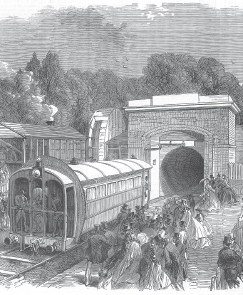

Charles Pearson (17931862), without whose vision the Underground may never have existed.

The cut and cover method of building was incredibly disruptive to anything in its path. Here Parliament Square, with the Houses of Parliament in the background, is being excavated for the building of the District line. Today, the grass of the green in the middle of the square is part of a thin covering over the tunnel.


Early stations, such as Notting Hill Gate, which opened in 1868, were light and airy compared to many of their successors.

Sir Edward Watkin (18191901), left, and James Staats Forbes (18231904), right, were bitter rivals when they ran, respectively, the Metropolitan and the District railways.

The London system was the only underground in the world to use steam trains as the principal form of traction. Here a Circle line train approaches Aldgate.

The underground railways made use of every possible space in their stations to advertise their services.

These first-class passengers on their comfortable, upholstered benches are being advised that their next station is Victoria.



